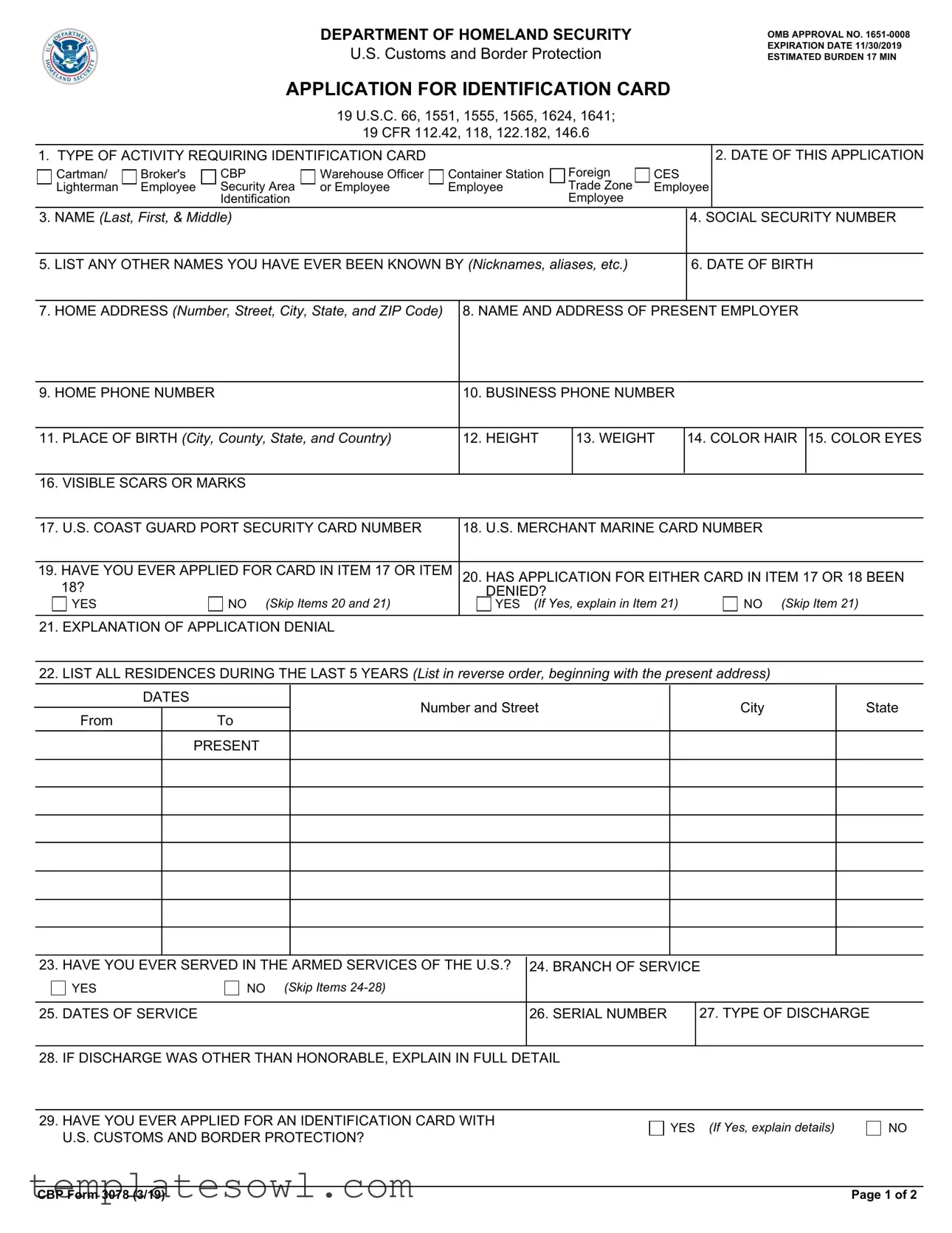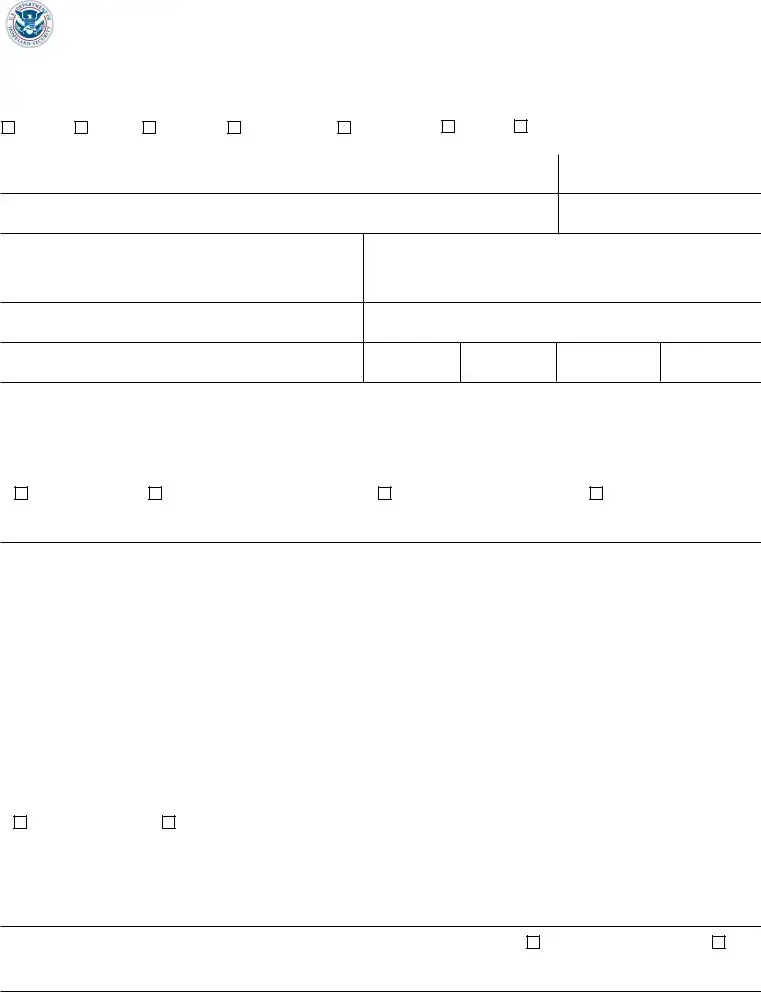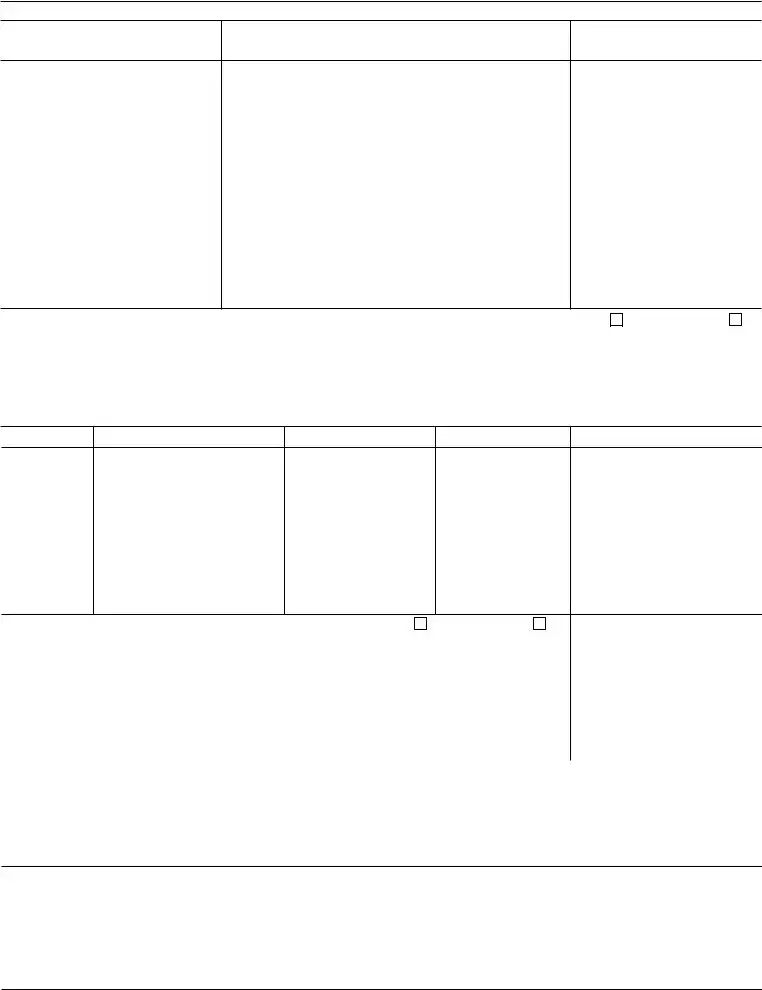Completing the CBP Form 3078 can be a vital step for many individuals seeking identification cards. However, common mistakes can lead to delays or even rejections. Understanding these pitfalls helps ensure a smoother application process.
One frequent error occurs when applicants fail to provide complete personal information. All fields marked with an asterisk or those clearly labeled as required must be filled out. Leaving sections blank, especially critical details like your name, date of birth, or social security number, can create complications. Always double-check to ensure every relevant box is filled in before submission.
Another mistake involves the inaccuracy of residence history. In Section 22, applicants must list all residences for the previous five years in reverse chronological order. Forgetting an address or entering the wrong dates diminishes credibility with CBP. Hence, it’s advisable to review past rental or ownership records to ensure accuracy.
Misunderstandings about criminal history reporting also lead to issues. If an applicant answers “yes” to having a criminal conviction, they must provide complete explanations in Section 32. Omitting details or failing to disclose minor offenses can harm the applicant's case. Remember, it’s better to be transparent rather than risk the perception of dishonesty.
Not attaching a photograph, as requested in Section 34, is another oversight. The form explicitly states that a photograph needs to accompany the application. Skipping this step means the application will be considered incomplete, leading to delays. Make sure your photo complies with any specified requirements.
Using incorrect or outdated contact information can also pose a significant problem. Section 9 and Section 10 require home and business phone numbers. Inaccurate numbers can prevent CBP from reaching you for additional information or clarifications. Always provide current and reachable contact information.
Another common mistake lies in the applicant's signature and certification. The form requires an ink signature, and submitting a typed name or digital signature is not acceptable. Failing to sign may result in processing delays, so always ensure the signature is in ink and matches the name on the application.
Providing a nickname or alias without clear explanation also complicates matters. While it is important to include all names you have been known by in Section 5, failure to explain past names can create assumptions about your identity that could impede the application review process. Clarity is crucial, so be sure to explain any potential confusion regarding names.
Confusing the section numbers when providing explanations for previous applications or denials is another common error. Section 29 and Section 21 require distinct narratives. Carefully read prompts to provide the correct details and avoid redundancy. This approach will reflect attention to detail and enhance your credibility.
Finally, many applicants forget to review their entire application before submission. Errors can slip through in a last-minute rush, potentially jeopardizing the application. Taking a comprehensive, thoughtful review of the completed form can save time and effort in the long run.


